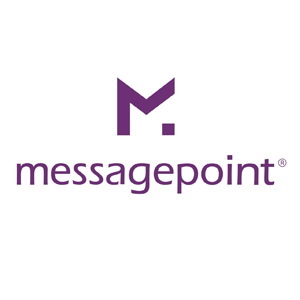 WCM Rendering with Meta tags
WCM Rendering with Meta tags
Business user content and rule management
With Messagepoint you can deliver personalized content to who you want, when you want and how you want - quickly and easily.
Overview
Core Features of Messagepoint
Great news! You no longer need to create complex spreadsheets to manage your customer communications' content. With Messagepoint, marketers and business folks can now quickly create, test and approve content across print and digital channels, without requiring IT.
With the hybrid cloud model, you never compromise security. While you manage your content and rules in the cloud, your customer data always stays behind your firewall.
And don't worry. You don't have to throw away your current technology because Messagepoint connects with your existing composition and communications delivery technologies.
Enter content using an easy-to-use web-based editor
You can use a simple web-based editing tool that has been pre-set with styles that meet your brand standards, to enter or change your communications content.
Target content using non-technical language
By creating targeting rules in plain language, you can deliver the right content to the right customers at the right time.
Share content across communications
To ensure consistency across all of your communications, you can share text and graphical content. When you make a change to your shared content, it's done in one place and automatically updates everywhere it's used across your communications.
Easily manage client variations
Managing multiple variations of your customer communications no longer needs to be a spreadsheet nightmare. With Messagepoint, you can quickly create and manage content for each of your customer segments in a single structured template.
Self-serve proofing and testing
With self-serve proofing and testing, you see what your content looks like in real time. Once you are sure it's correct, formatted properly, and being sent to the right person, you can approve it and quickly get it into production.
Approve your content
A configurable approval workflow ensures that only the content changes that are approved by the right users make it into production.
Managing versions and releases
The Versioning features lets you work on multiple versions of the same communication in parallel, then sync those changes when and where you need them.
Tracking and reporting
The Reporting feature gives you the information you need to verify the right content went to the right customer. You can also see exactly what messages and content an individual customer received.
How Messagepoint Works
Messagepoint is comprised of two parts: a cloud-based messaging platform for the creation and collaboration of messaging content and rules; and an on-premise component, the Decisioning Engine (DE) that interacts with your client data and composition tools. Messagepoint's hybrid nature translates into a lower cost of ownership, always up-to-date software, and assurance that your client data is secure behind your firewall.
In the cloud, content and rules are created, proofed, tested, and approved based on your preferred workflow, by your business users. After content approval, a content “bundle” containing all rules and resolved content is passed securely to IT Operations, who can then start the UAT and production processes.
The Decisioning Engine is now used as the first step in the composition process determining what content each recipient should receive and then passing that content to your composition tool of choice, like OpenTextTM Exstream or Quadient Inspire that will then generate your preferred output. To close the loop, a touchpoint delivery report is generated on-premise, combining information on what was processed by the DE, as well as what was actually sent out by composition.
Messagepoint and Digital Channels
- Give business users control over messaging content, messaging rules and approval workflows.
- Messagepoint integrates with existing delivery systems while your valuable customer data remains secure behind your firewall.
- Improve the customer experience through personalized, targeted messaging delivered to any channel.
Messagepoint generates touchpoint streams for email, web and other HTML delivery channels. With the Messagepoint and Salesforce Marketing Cloud (ExactTarget), integration, maximize your marketing efforts throughout the entire communication lifecycle. Messagepoint allows for the creation and management of variable content for touchpoints utilizing one single template. Preview and test emails before they go live, and oversee each step of your customized approval process for validation. Increase efficiency by re-using content for variations of touchpoints. Best of all, push out emails and other communications in high volume across all channels, perfect for cross-channel campaigning.
Messagepoint Connected
Messagepoint Connected gives you the added feature of being able to communicate with your customers in real-time. Front-line, customer-facing employees, such as call-center reps, can quickly retrieve and interact with customer communications on the fly. They can now meet customers' requests on-demand – with an automated approval workflow in place to provide the safety net required.
- Select
User selects from a predefined list of documents - Edit (optional)
User adds custom content only where permitted - Review
User reviews proof through browser and submits - Approval
Order request is sent to an authorized approver for validation - Process
Approved order is placed for one-off or batch processing and sent
Messagepoint Rationalizer
Messagepoint Rationalizer is part of Messagepoint's Customer Communications Assessment solution. It allows you to understand the content that is in your large volumes of communications and provides an intelligent way to organize, re-use and maintain it so that you can more effectively execute your communications strategy. With content rationalization in place, you can significantly streamline the volume of correspondence you are currently managing and make communicating with customers easier - for them and for you.
- Understand your inventory
Using Rationalizer, you can organize the content of your customer communications, based on relevant attributes and patterns. - Catalog and query your communications
Once you create a detailed inventory (a catalog) of your existing communications, you can then run queries on the content and attributes so you know what you are communicating to your customers. - Standardize and re-use core content to eliminate duplicates
By identifying what content you need, what can be shared and what can be re-used, you can reduce the volume of your correspondence significantly. Define the core content once with a common voice.

